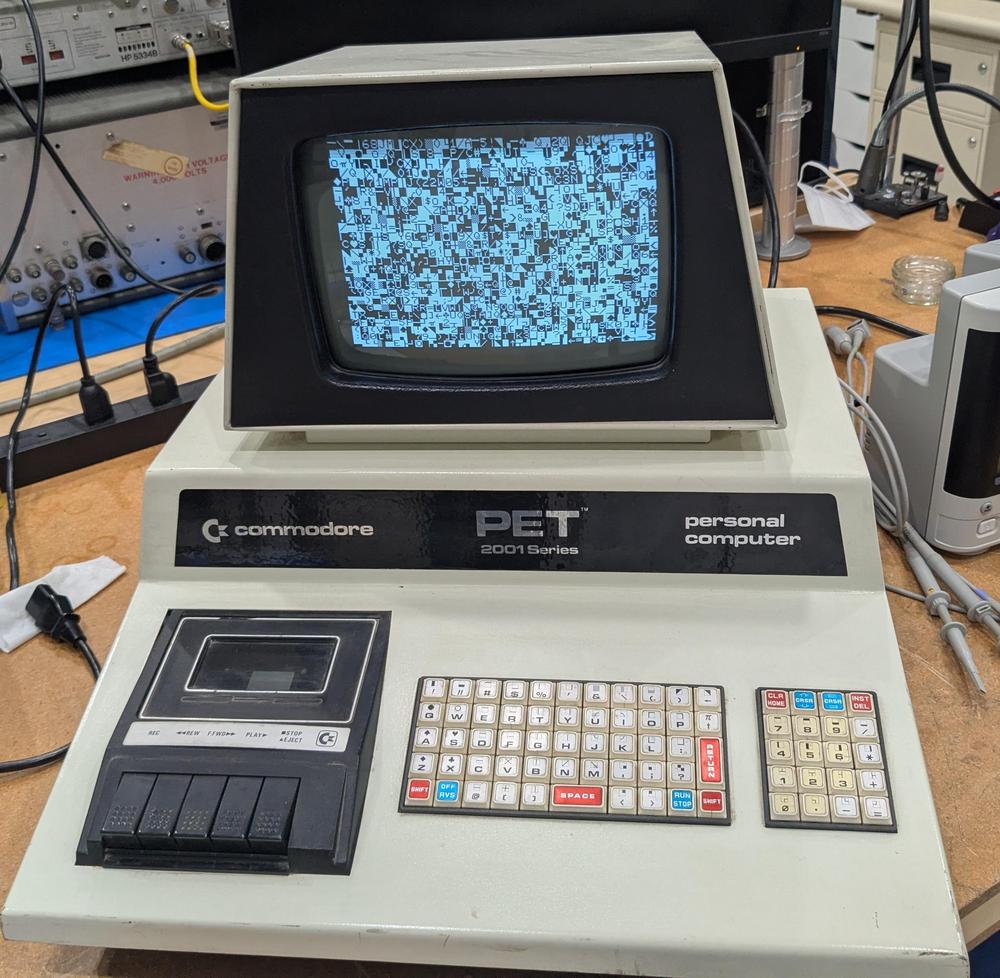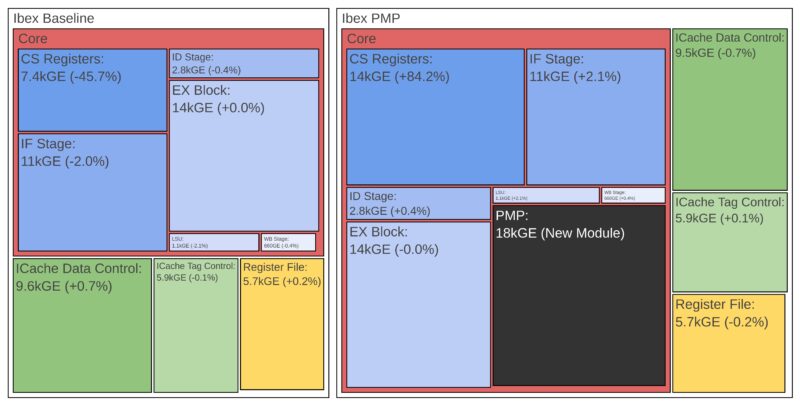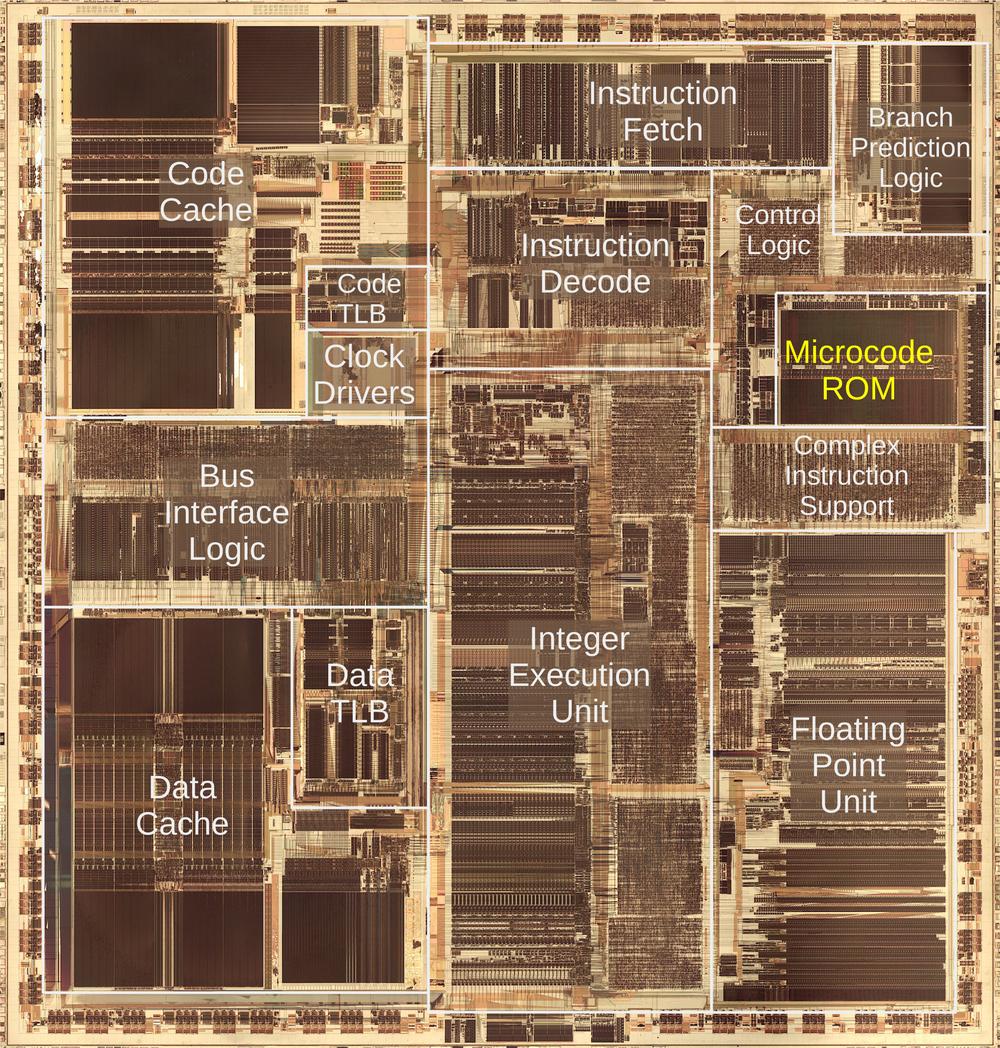Feed SparkFun Electronics [copy] http://www.sparkfun.com/feeds/news has loading error: cURL error 22: The requested URL returned error: 405
Feed The RFID Weblog [copy] http://www.rfid-weblog.com/index.rss has loading error: cURL error 22: The requested URL returned error: 404 Not Found
Feed tqfp.org [copy] http://tqfp.org/rss/ has loading error: A feed could not be found at `http://tqfp.org/rss/`; the status code is `200` and content-type is `text/html; charset=utf-8`
A tricky Commodore PET repair: tracking down 6 1/2 bad chips
https://invidious.privacyredirect.com/watch?v=nxilekpLp6g

mult3
In 1977, Commodore released the PET computer, a quirky home computer that combined the processor, a tiny keyboard, a cassette drive for storage, and a trapezoidal screen in a metal unit. The Commodore PET, the Apple II, and Radio Shack's TRS-80 started the home computer market with ready-to-run computers, systems that were called in retrospect the 1977 Trinity. I did much of my early programming on the PET, so when someone offered me a non-working PET a few years ago, I took it for nostalgic reasons.
You'd think that a home computer would be easy to repair, but it turned out to be a challenge. The chips in...
April Update: Risc It For A Biscuit
This month, the PineTab-V returns, PineNote, PineTab2 and PineTime software improvements and a new Pinecil micro soldering tip set. Does anyone even read these descriptions?
Memory Safety Features Impact on Ibex based processor area

...
Газоразрядная лампа с символами, своими руками

Текущая работа в домашней лаборатории-мастерской — практический крупный декоративно-сувенирный электровакуумный прибор (ЭВП), развитие прототипа [1] c аргоновым наполнением и дополнительным титановым электродом-геттером, распыляемым разрядом — для некоторого понижения давления и удаления нежелательных примесей в рабочем газе. В работе использовано дешёвое стекло от трубчатых ламп дневного света (ЛДС), несложное самодельное оборудование и оснастка, простые приборы и инструменты. Читать дальше →
ЛИСС. Оживляем самый суровый транспортный информатор

Приветствую всех!
Несколько раз я уже рассказывал про устройства, объявляющие остановки в нашем городском транспорте. И вот ко мне попал ещё один экземпляр, пожалуй, самый примечательный из всех, что я встречал ранее. Интересен он тем, что собран полностью на дискретной логике, без применения микроконтроллеров вообще. Круче него только аналоговые экземпляры на магнитной ленте.
Итак, в сегодняшней статье поговорим о том, что это за устройство, а заодно и постараемся его оживить. Заодно разберёмся, как оно работает. Традиционно будет много интересного.
Читать дальше →
Fritzing 1.0.5 released
Fritzing 1.0.5 is a maintenance release. It has been tested on Windows 11 24H2 (ARM and Intel), macOS Sequoia, macOS Ventura, Ubuntu 22.04, and Ubuntu 24.04. What is new Windows ARM Support for Windows on ARM CPUs. Fritzing uses Prism on Windows 24H2 to run on ARM. New Fonts We are fading out Droid Sans and Open Sans in favor of Noto Sans. This affects mostly the Breadboard and the Schematic View. A bunch of Fritzing parts was using unknown fonts, which resulted in using whatever fallback font the operating system provided. We have replaced these with either Noto Sans,...
Изготовление простой газоразрядной лампы с распыляемым Ti геттером

Очередная порция учебно-тренировочных работ в деревенской любительской лаборатории-мастерской — изготовление улучшенной индикаторной газонаполненной лампы простыми, недорогими средствами, с применением элементарного низковакуумного оборудования. Пониженное давление рабочего газа в лампе обеспечивается распылением титанового геттера. Заодно отрабатываем и совершенствуем стеклодувные операции и технологические мелочи. Читать дальше →
lowRISC and SCI Semiconductor Release Sunburst Chip Repository for Secure Microcontroller Development
...
Телефон на 600 квартир

Приветствую всех!
Когда-то давно попался мне на просторах вот такой мем:
Посмотрел я тогда на всё это и забыл. А недавно, встретив его ещё раз, подумал: что, если попробовать сделать такой девайс в реальности? Как насчёт собрать такой телефон, по которому в самом деле можно будет позвонить? Именно этим-то мы сейчас и займёмся. Читать дальше →
Notes on the Pentium's microcode circuitry

Most people think of machine instructions as the fundamental steps that a computer performs. However, many processors have another layer of software underneath: microcode. With microcode, instead of building the processor's control circuitry from complex logic gates, the control logic is implemented with code known as microcode, stored in the microcode ROM. To execute a machine instruction, the computer internally executes several simpler micro-instructions, specified by the microcode. In this post, I examine the microcode ROM in the original Pentium, looking at the low-level circuitry.
The photo below shows the Pentium's thumbnail-sized silicon die under a microscope. I've labeled the main functional blocks. The microcode ROM is highlighted...